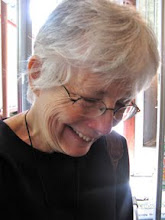Hebrews 9:24-28
Our celebrant preached on the Epistle rather than the Gospel this morning. Nice change, especially since just about everything that could be said about the widow and her mite has already been hashed over a hundred times. We know what Jesus said, we know what he meant, we just don't care to follow His instructions... myself included, I'm sorry to say.
In the letter to the Hebrews, (as our celebrant explained) there's a different problem... one of understanding Scripture based on prevailing worldview. The theology being explained in that letter was from Leviticus, written centuries before. The worldview then and the worldview at the time of the letter were significantly different, and our worldview now is different still. He went on to suggest that an understanding of all three helps to make sense of what otherwise would be just a lovely and poetic metaphor. I can relate. So much of the Old Testament seems (to me) to be poetry, not fact, especially in light of scientific discovery. It's close enough in a metaphorical way to comfort and enlighten, but not so far-fetched as to give me reason to doubt. I've been challenged before on my simplistic acceptance of what the Bible says, just as I've been challenged in my skepticism as to whether Jesus really said all that stuff. But that's a whole 'nother issue.
(In the letter to the Hebrews) the real world was heaven. The shadow world was here, where we live. Christ was from the real world, but entered the shadow world, bringing light. His incarnation transformed our world in ways we cannot necessarily see, but nevertheless transformed it. Sin, though seemingly still with us, lost its deadly hold on this world. "Once for all " as the text reads.
The whole point of the homily was to encourage us to translate Scripture in today's language, expressing the writer's same conviction in Jesus, but in the context of our present understanding. It reminded me of a book I read: The Holographic Universe. Current string theory and holographic theory explain in a new language the difference between the real world and the world we can actually perceive, much as the analogy of heaven and the shadow world. The language exists. We should use it.
Subscribe to:
Post Comments (Atom)




No comments:
Post a Comment